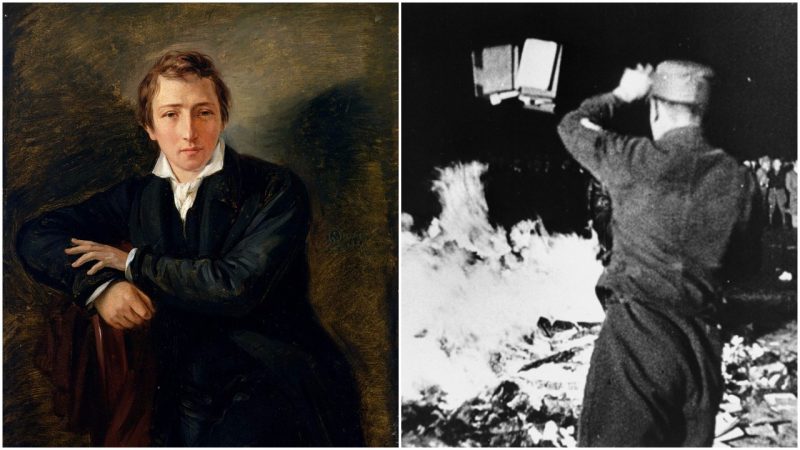In a 1995 essay titled “Ur-Fascism”, the late Umberto Eco lists fourteen common traits of fascism.
In one of his points, he describes the cult of tradition, explaining how ancient history becomes a source for fascist movements and propaganda. If we consider, for example, how the German Castle of Wewelsburg became an instrument to spread teachings of an “ancient, highly developed Germanic civilization,” we can see how this “cult of tradition” operated in Nazi Germany.
Eco further mentions the fear of difference, where those who oppose the fascist philosophy and way of thinking must be eradicated. The idea of this point is to spread xenophobia, by encouraging a “unification” of thinking.
Finally, Eco tackles the Nazi schoolbooks which purposely “made use of an impoverished vocabulary and an elementary syntax, in order to limit the instruments for complex and critical reasoning.” This point brings us to the Nazi book-burning campaign, which highlights all of these assertions about the nature of fascism.
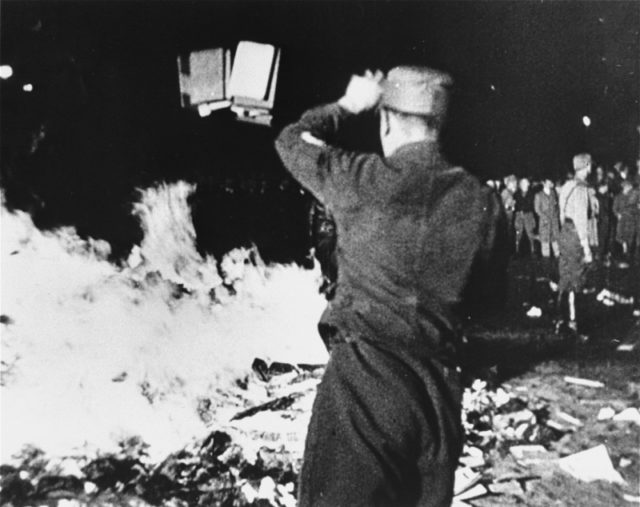
It was April 1933, shortly after Hitler came to power in Germany. The sinister leader had already exhibited some dangerous politics by then, beginning to pave the way for his decade-long dictatorship. That month, the Main Office for Press and Propaganda of the German Student Union came to prominence. The student body had proclaimed a nationwide “Action against the Un-German Spirit,” calling for a literary purge that included books and authors which they considered subversive to the Nazi ideology. As you might assume, these books were written mostly by Jewish, pacifist, communist, and socialist authors.
The campaign advocated for “pure” national language and culture, and particularly attacked “Jewish intellectualism.” The movement hoped to transform universities into centers of German nationalism.
On the eighth of April, the Student Union drafted the “Twelve Theses,” which deliberately stirred memories of another historic burning of “Un-German” books, at the Wartburg festival a century earlier.
As the United States Holocaust Memorial Museum explains, “in 1817, German student associations (Burschenschaften) chose the 300th anniversary of Luther’s 95 Theses to hold a festival at the Wartburg, a castle in Thuringia where Luther had sought sanctuary after his excommunication. The students, demonstrating for a unified country — Germany was then a patchwork of states — burned anti-national and reactionary texts and literature which the students viewed as “Un-German.”
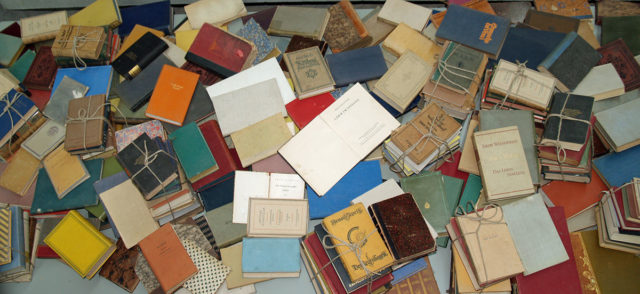
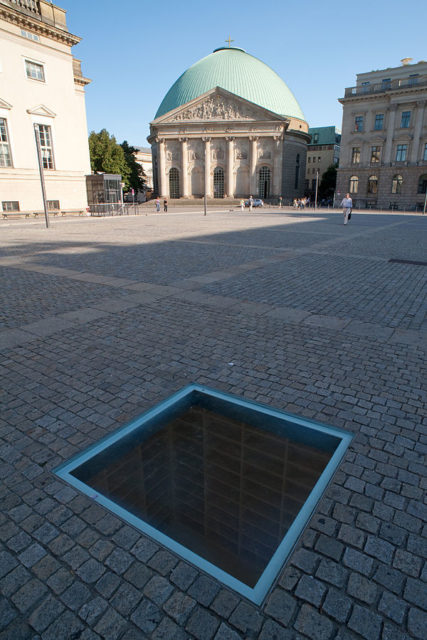
The Theses were distributed on university campuses around Germany, before the actual book burning in May 1933. On the tenth of May, students around the country marched in torch-lit parades against the “Un-German Spirit.” The students called upon high-ranking Nazi officials, professors, or student leaders to address participants and spectators. More than 25,000 volumes of allegedly “un-German” literature were burnt in bonfires, foretelling a dark era of uncompromising censorship under the Nazi regime.
The central book burning event happened at the Opernplatz (today the Bebelplatz) in Berlin and was broadcast live on the radio across Germany.
Many of the students attending the cult-like burning ceremony were dressed in SS or SA uniforms, which were commonly worn by Nazi paramilitary groups.
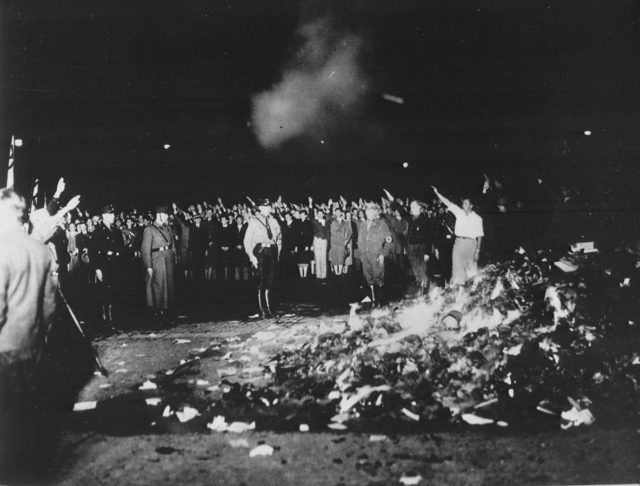
The main speaker at Opernplatz arrived at midnight. Joseph Goebbels himself, the Nazi propaganda minister with a doctorate in Germanic studies, came to address the crowd. He was the person who most actively called for the extermination of the Jews. Some 40,000 people had gathered at the Opernplatz to hear Goebbels’ chilling speech:
“The era of extreme Jewish intellectualism is now at an end. The breakthrough of the German revolution has again cleared the way on the German path. . . . The future German man will not just be a man of books, but a man of character. It is to this end that we want to educate you. As a young person, to already have the courage to face the pitiless glare, to overcome the fear of death, and to regain respect for death — this is the task of this young generation. And thus you do well in this midnight hour to commit to the flames the evil spirit of the past. This is a strong, great and symbolic deed — a deed which should document the following for the world to know — here the intellectual foundation of the November Republic is sinking to the ground, but from this wreckage, the phoenix of a new spirit will triumphantly rise.”
Not all book burning actions were conducted on May 10 as initially planned. Some were postponed to June 21, the summer solstice, because it was a traditional day for festivities.
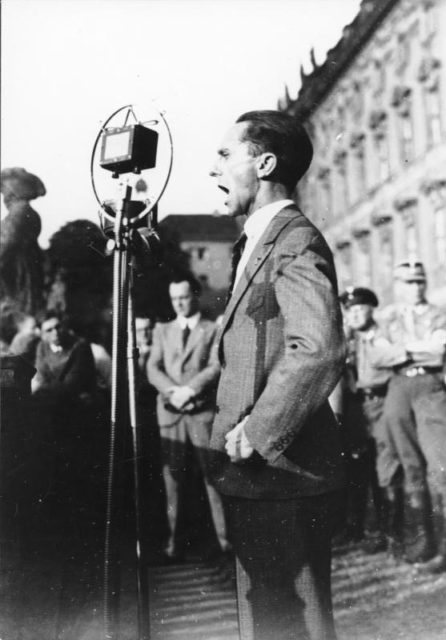
Among the first books to burn were those of Heinrich Heine. A nineteenth-century German-Jewish poet, his work was a prime target. Ironically, though, Heine wrote in his 1820-21 play Almansor, “Dort, wo man Bücher verbrennt, verbrennt man am Ende auch Menschen.” Translated into English, the excerpt reads, “Where they burn books, they will in the end also burn people.”
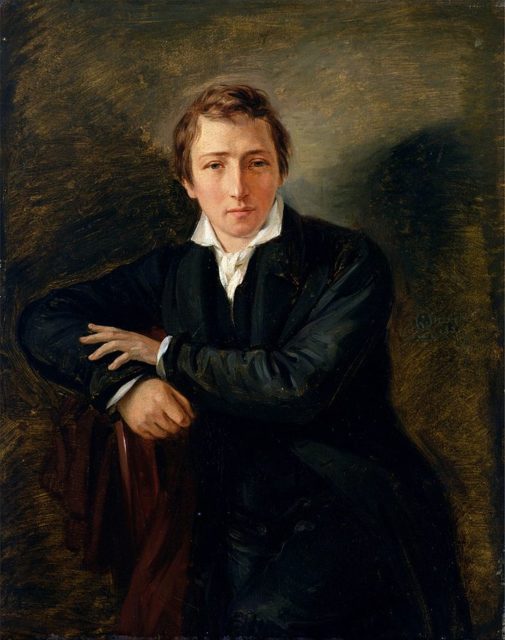
Aside from Heine, the list of authors whose books the Nazis burned is long. Among them was Bertold Brecht, August Bebel, Karl Marx, Heinrich Mann, Rathenau, Thomas Mann, Franz Werfel, Max Brod, Stefan Zweig, Ernest Hemingway, H.G. Wells, Bauhaus, Hirschfeld, Franz Blei, and Victor Hugo, just to name a few.
Read another story from us: Walter Benjamin committed suicide in fear of being captured by the Nazis
Heine’s premonition tragically materialized. The holocaust of books was soon followed by the repugnant holocaust of people. The numbers tell us that about a million Jews were killed in Auschwitz alone, only a little less in Treblinka, 434,508 in Belzec, 167,000 in Sobibor, and more than 155,000 in Chelmno. At least 200,000 Jews were also killed at random locations across central and southern German-occupied Poland. This appalling loss of life is just a portion of the horrors brought about by the Nazis, in one of the darkest moment in human history.
